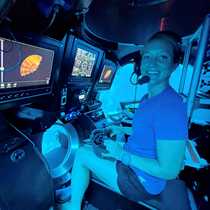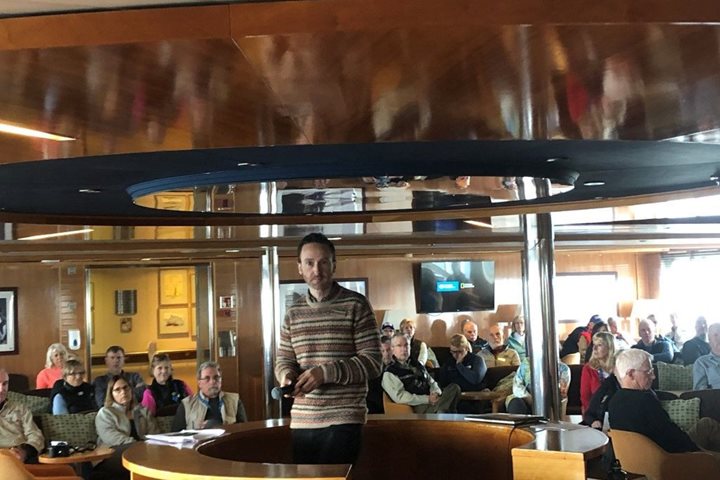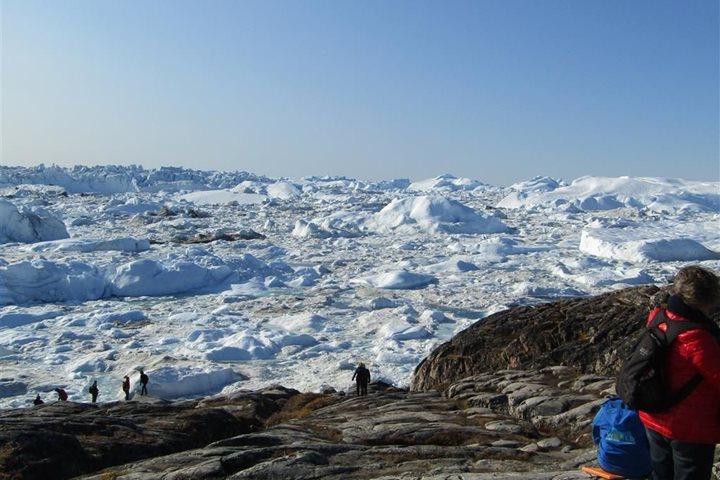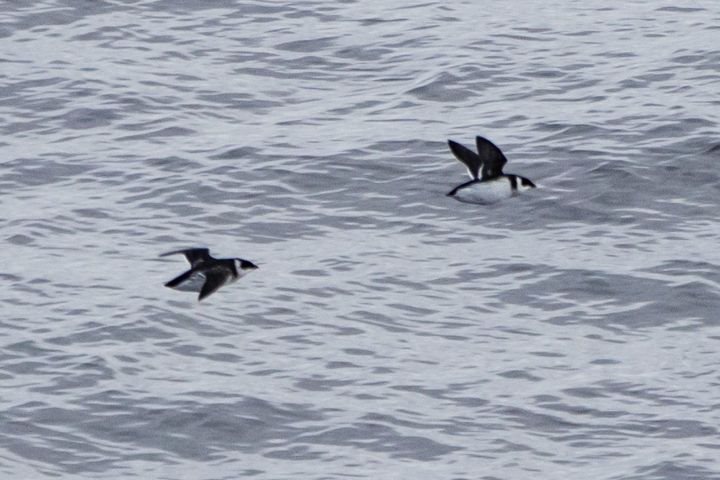We had calm seas in Baffin Bay, and around 1:30 a.m., National Geographic Explorer crossed into Canada. Though it was a full day at sea, it wasn’t a slow day. Energy and excitement were high and we spent time on the outer decks, photographing sea birds, looking at charts on the bridge, getting to know our officers, and enjoying the peacefulness of the calm seas and fresh air. The sun was shining, but the periodic passing of large icebergs in the distance reminded us that we were in Arctic waters.
We have a lot we want to learn about this new environment. One of the highlights of traveling with Lindblad Expeditions-National Geographic is getting the opportunity to engage with the diverse group of experts on the staff team. We had four different lectures to introduce the history, culture, and wildlife of this area, which ultimately just left us thirsty to learn more.
It must have been our lucky day because shortly after lunch, we saw northern bottlenose whales—an incredibly rare encounter! Collectively, our experienced natural history team has only seen this species a handful of times. These large, beaked whales are incredibly deep divers—recorded dives for the pursuit of squid prey have been more than 5,000 feet deep. Looking at photographs of our encounter, we noticed that one of the whales had cookie-cutter-shaped shark bites as well as scars that were likely the result of an encounter with a killer whale. It was nice to be able to look at the photographs with the onboard biologist to gain insight about the whale’s life at sea—a great way to integrate science and technology.
We felt sufficiently wined, dined, and eager to explore Pond Inlet the next day.







